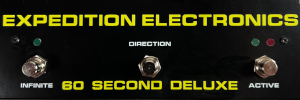Showing posts sorted by relevance for query Ambient Synths In The Wild. Sort by date Show all posts
Showing posts sorted by relevance for query Ambient Synths In The Wild. Sort by date Show all posts
Thursday, November 13, 2025
Generative Patches: Behringer Edge+Crave+Spice Live Jam Demo
video upload by Anton Anru
"🟪🟧🟥 ECS Generative is a collection of 25 patches (+Crave patterns) for the semi-modular system by Behringer: EDGE + CRAVE + SPICE.
This genre of sound design is highly popular within modular culture, and the Behringer synths offer an excellent feature set to explore it.
Controlled chaos and randomness, probability, non-repetitiveness, tempo shifts, pattern uniqueness, the alternation of short and long sounds, unexpected changes, silence and density, harmonic and FX-like tones, and glitchy bursts throughout sequences — all of these elements are part of the soundset.
📦 Get these patches: https://antonanru.sellfy.store/p/ecs-...
Sunday, February 05, 2017
Ambient Synths In The Wild
Synthesizer of Infinite Light
Published on Feb 4, 2017 Ambient Synths In The Wild
"Volca Keys in non-sequential mode."
Crusty Post-tone
Published on Feb 4, 2017
"Double delayed Volca Keys on the roof."
Golden Amitabha
Published on Feb 4, 2017
"I think this rooftop spot is my favorite place to do outdoor ambient synth meditation."
Korg Triton Taktile.
Published on Feb 4, 2017 Ambient Synths In The Wild
"Volca Keys in non-sequential mode."
Crusty Post-tone
Published on Feb 4, 2017
"Double delayed Volca Keys on the roof."
Golden Amitabha
Published on Feb 4, 2017
"I think this rooftop spot is my favorite place to do outdoor ambient synth meditation."
Korg Triton Taktile.
Thursday, October 23, 2025
Generative Patches: DFAM+Mother-32+Subharmonicon. Jam Demo
video upload by Anton Anru
📚 DMS Generative is a collection of 25 patches for the semi-modular system Moog Sound Studio: DFAM + Mother-32 + Subharmonicon. This genre of sound design is highly popular within modular culture, and the Moog Sound Studio offers an excellent feature set to explore it.
🎛 Controlled chaos and randomness, probability, non-repetitiveness, tempo shifts, pattern uniqueness, the alternation of short and long sounds, unexpected changes, silence and density, harmonic and FX-like tones, and glitchy bursts throughout sequences — all of these elements are part of the soundset.
🎚 Generative timbres can serve as a strong addition to, or the main element of, ambient or techno tracks, jams, and performances. You can also record fragments into your DAW or sampler, slice them into one-shots or loops, and obtain unique material for further processing.
📦 Get these patches: https://antonanru.sellfy.store/p/moog...
🕹 The key idea behind the soundset is a high level of interconnection. In this patchbook, the timbres of the synths are intertwined — they cannot exist independently:
🔹 They modulate each other with LFOs and envelopes.
🔹 A sequence from one synth may change parameters on another.
🔹 Trigger interactions, clock/rhythm, and run/stop modulations break predictable patterns.
🔹 Audio signals from VCOs may be used as modulation sources to create harmonies, intervals, or wild experimental inharmonic tones.
🔹 Alternatively, they can be used as audio sources routed into another synth to be processed through its unique filter and envelope — giving the signal a “second life.”
DFAM, M32, and SUBH each play distinct and defined roles — it’s not a sound mess, but a tightly integrated system where the synths work in close cooperation.
Sunday, December 03, 2006
Synth CDs
See the Synth CDs label for more.
Vintage MOOG Albums - Free downloads. Check this one out. This is not an ad.

Amin Bhatia Virtuality
Post on MATRIXSYNTH

Switched on Bach (MOOG)
Vintage MOOG Albums - Free downloads. Check this one out. This is not an ad.

Amin Bhatia Virtuality
Post on MATRIXSYNTH

Switched on Bach (MOOG)
Thursday, October 31, 2024
Behringer Edge+Crave Generative Modular Patches No Talk Demo
video upload by Anton Anru
"«EC Generative» is a collection of 25 patches (+25 patterns for Crave) for semi-modular synthesizers Behringer EDGE + CRAVE.
⚙️ This genre of sound design is very popular in modular culture, and EDGE + CRAVE provide an excellent set of features to get you started. Controlled chaos, randomness, probability, non-repetitiveness, tempo variations, pattern uniqueness, alternating short and long sounds, unexpected changes, silence and density, harmonic and FX-like tones, freaky splashes during sequences—all of these elements are included in the soundset.
🟪🟨 Get the soundset: https://antonanru.sellfy.store/p/behr...
Generative timbres can add to or lead in ambient or techno tracks, jams, and performances. You can also record fragments into your DAW or sampler, slice them into one-shots, or create loops to obtain unique material for further processing.
🔮 The main focus of the soundset is a high level of interconnection. In this patchbook, the timbres of the synths are intertwined and cannot exist separately:
🔸 They modulate each other with LFOs and envelopes.
🔸 A sequence from one synth alters parameters on the other.
🔸 Gates and triggers interact to disrupt predictable patterns.
🔸 Audio signals from OSCs may serve as modulation sources to create harmonies/intervals or wild, experimental inharmonic tones.
🔸 They may also be used as audio sources sent to the other synth for processing with its different filter and envelope, giving them a 'second life.'
Wednesday, January 10, 2024
Elektron Digitone Ambient Works
video uploads by Benjamin Brodie
"Combining deep FM synthesis with a familiar subtractive synthesis signal flow, the Elektron Digitone is an amazingly powerful 8-voice synth. And with Elektron's acclaimed sequencing onboard, your creative potential is practically unlimited. Digitone is ready to create with four independent synth tracks, each with a 4-operator FM synth engine featuring eight different FM algorithms. Those algorithms — along with pretty much everything else — can be locked to different values for each sequence step. Factor in four MIDI tracks, an arpeggiator for each track, two LFOs per synth voice, multimode filtering, and built-in effects, and the Elektron Digitone may just be the FM synth you've always wanted to perform with.
The complex timbres and sonic animation you can create with FM synthesis make it a unique method of sound creation, and Digitone presents it in a welcoming fashion. Each of the four synth tracks features its own 4-operator FM synth engine with eight algorithms. Elektron gave Digitone a familiar subtractive synthesis-style workflow that makes tweaking these voices fun and intuitive. And with the potential to lock a different synth sound into every sequence step, Digitone offers far more sonic potential than most 8-voice synthesizers — or most FM synths in general for that matter.
The elusive song of the desert, caused by grains of sand rubbing against each other, is nature’s own FM synthesizer. Sometimes roaring, sometimes wailing, always enchanting. Enter the alluring dunes of Digitone: a compact synthesizer that fits snugly at home, in the studio, and on stage.
FM synthesis occurs when you modulate the pitch of one oscillator with another, to achieve rich and unexpected timbres. The ratio and rate of modulation impact the resulting sound. Digitone uses four oscillators, or operators, per voice. A particular configuration of operators is called an algorithm. For classical FM synthesis, it ends here.
With the Digitone, you get to shape, enrich and modulate the sound even further, using the powers of subtractive synthesis. Use the multimode filter with its custom envelope to soften or pronounce the wild overtones. Cut off the low, mid, or high frequencies. Sculpt with style and precision. Define the sound decisively using the full-featured amp envelope. Carve the contour of the sound.
You can add more movement to the sound using an LFO or two. Set any sound-shaping parameter in automated, repeated motion. At a very slow or a very fast speed, using a variety of different waveshapes, including a random one. Make your sound sway gently like the ocean, or flutter like a butterfly."
Tuesday, December 03, 2024
microKORG2 NEW SOUNDS (4 BANKS - MUSIC DEMO) 🎹🔥
video upload by FutureMusic.es
"Korg has announced with great fanfare the release of four new microKORG2 sound packs, featuring completely exclusive programming for this versatile and popular best-selling synthesizer…
[ESP] Korg anuncia a bombo y platillo el lanzamiento de cuatro paquetes de sonidos microKORG2, con programaciones totalmente exclusivas para este versátil y popular sintetizador superventas…
00:01 microKORG1 Best Selection
01:54 Templates And Tutorials
03:32 BLINKSONIC Vol1 Classics
05:16 BLINKSONIC Vol1 Acoustic Feel
07:31 BLINKSONIC Vol1 Calm
11:00 BLINKSONIC Vol1 Hybrid
15:11 BLINKSONIC Vol2 Energic
18:51 BLINKSONIC Vol2 Wild
22:08 BLINKSONIC Vol2 Weird
25:48 BLINKSONIC Vol2 Basses
Friday, August 05, 2011
Roland JP-8000 Demo | Roland JP 8000 Programming Session
YouTube Uploaded by VisceralVoids on Aug 4, 2011
"Starting from a patch I made, looking for sounds on the JP-8000 getting lost along the way. I was looking for a sound and found it after this recording was made.
I am using the 12db band-pass filter alot, as well as the 24db low-pass sometimes to find the base of a sound. Sometimes I use RPS to get sound ideas when going during this rough programming session. Once I got the JP to sound like a CR-78 beat but I made a mistake and ended up not saving it like a JP-8000 noob.
JP-8000 tricks:
In the performance options you can detune the parts from one another aside from the detuning that goes on in the oscillators. So I have both parts stacked like this with polyphony set to 4-4 in the performance options. This gives you four oscillators and four LFOs. LFO 2 is tied to the mod stick and I have not even set it up yet in this video. One thing I have not tried is the splittable arpeggiator. I used the supersaw on alot of this video.
The DVD Owner's Manual is worth checking out, it will also give you a good ideas on how to program sounds you want.
Velocity assign and ribbon assign are two more insane things about this synth, and I am still learning many of its features. For example you can assign PWM Shape to the ribbon controller or velocity. The manual is easy to understand and it's where I learned about the performance part options that can be detuned and set seperate from the oscillators altogether. This is how you can get four different LFOs or two different arpeggiators happening.
Final thoughts:
Many synths have an interface that blocks you from attacking the impulse to edit sounds - with the JP-8000 I feel you can really create patches easily. I thought the JD-800 was great for electronic music but the JP-8000 is incredible in this regard. It is more more modern and aggressive than the beautiful digital JD-800. Within a day of starting to learn programming on the JP-8000 I made once of my favorite synth sounds from a 1981 Genesis song, which is the first patch used in this video.
Roland's JP-8000 is very good for 80's, progressive, electronic, ambient, hardstyle or hardcore techno, industrial or dance, or wild experimental synth sounds."
Thursday, January 11, 2018
Soviet Solaris Estradin 314 demo proj3
Published on Jan 11, 2018 Paul Curreri
Update: this one is currently for sale on Reverb here. Pics captured here.
"A bit of a meander through this fascinating and wild analog poly / organ.
As you can see, it’s in excellent cosmetic condition. Sliders all slide fairly smoothly. A proper power cable was professionally installed, as the one it came with didn’t fit snugly. It still uses 220V though, so a converter is required.
Now, much as I love it, I can’t say for certain that this Soviet-Era instrument is functioning 100% optimally. After all, I don't speak Russian, and I've never encountered another! You can probably hear the slight hum -- though the signal-to-noise ratio easily masks that when playing. Perhaps it could use a tune-up?
I’ve always found the unit perpetually intriguing. One minute it’s a 60s compact organ (w. a filter!), the next a 70s string machine, then a growling 80s analog synth bass, and then blammo: a rocket ship. I mean, c’mon.
If your path in life leads you to encounter a Solaris Estradin 314, maybe bring it home?
Thanks for watching.
* * * * *
Wonderful description from the web:
Vintage rare soviet analog polyphonic synthesizer - SOLARIS Estradin-314. Produced in the USSR on "Estradin" factory in Zhitomir city (famous for its Estradin-230 & Altair-231 synths) in 1988.
SOLARIS uses organ style drawbars to create the basic tone, and has a analog filtering as well. Inside it has 12 voice boards that correspond to each key in an octave, and then uses a divide down system to get to the other octaves. The filter is really extreme and sounds fantastic, as well the envelope is really punchy, so you get great synth stabs, sweeps and percussive organy sounds.
If you use the envelope and filter sections carefully you can get great moogy leads out of it, warm organ sounds, flying ambient textures, in the high resisters it can sound like a string machine, or even a theremin if you crank the resonance.It has tons of character and can sounds amazing!"
Tuesday, April 11, 2023
BASTL Introduces the Bestie Stereo Mixer
video upload by Bastl Instruments
Follow-up to Bastl Discontinues the Dude
"We are excited to announce our new portable 5-channel stereo mixer Bestie. It is a re-imagination of our popular mixer Dude (released in May 2017), but this time for flexible stereo connectivity and with portable USB-powered setups in mind. But it comes with a twist! We are not new to mixer feedback and distortion so channel 3 on the Bestie is pre-routed as a feedback channel for that extra dirt and distortion. Without the feedback, Bestie is a very clean mixer with a clean boost with up to +20dB per channel and well-crafted saturation characteristics."
Playlist:
Bestie The Stereo Mixer
Bestie in Battery Powered Ambient Setup
Bestie in The Wide Mix
Colour Your Cold Digital Synths With Bestie
Baslt Bestie - A mixer that make noises / no input mixing made easier
video upload by Stazma
00:00 Intro
01:28 How does a 808 beat sound through it w/ System80 880
02:40 A first look at feedback
04:28 It's stereo!
06:52 How to Feedback / "No Input Mixing"
09:15 Mixing a few instruments w/ Softpop 2
11:53 More mixing and more feedback / Moog MuRF
16:17 The Drone Show!
19:00 The Harsh Noise Show!
20:39 End talk
21:00 Drone meditation jam



Bastl brings us the Bestie, a spiritual successor to their Dude mixer, but this time with a built-in feedback loop and, surely to the delight of many, five channels of stereo operation. Housed in a metal casing, the Bestie is ready for touring, live performance, and with the option to be battery powered, this is one of the best options for recording your outdoor sessions. With the same saturated sound that made the Dude beloved, the Bestie can drive your signal hard and to take that one step further, leave the third channel open and your entire mix will feedback into itself for wild noisy sounds.
In fact, you don't even need to plug any input into the Bestie: create multiple feedback loops with external effects and use the third channel level control to bring in self-oscillating sounds. While it's easy to get over-saturated sounds, the Bestie is also equipped with low-noise preamps letting you use this as a wonderful standard mixer with ease. Each channel can use stereo inputs with channels 1 and 5 having two mono 3.5mm TS inputs and the other using 3.5mm TRS inputs. Along with that, a dedicated headphone output with a pre/post mute option lets you use this as a great live mixer with a cue output if desired. Bastl's Bestie might become your next bestie with its compact size, great size, and creative options.
BESTIE FEATURES
5-channel stereo mixer
Built-in feedback path via channel 3 for no input mixing
Low-noise preamps with overdrive characteristics when pushed
Mute switches for each channel
Headphone output with pre/post mute switch
Up to 20dB of boost per channel
Metal casing
USB-C and AA battery powered
Follow-up to Bastl Discontinues the Dude
"We are excited to announce our new portable 5-channel stereo mixer Bestie. It is a re-imagination of our popular mixer Dude (released in May 2017), but this time for flexible stereo connectivity and with portable USB-powered setups in mind. But it comes with a twist! We are not new to mixer feedback and distortion so channel 3 on the Bestie is pre-routed as a feedback channel for that extra dirt and distortion. Without the feedback, Bestie is a very clean mixer with a clean boost with up to +20dB per channel and well-crafted saturation characteristics."
Playlist:
Bestie The Stereo Mixer
Bestie in Battery Powered Ambient Setup
Bestie in The Wide Mix
Colour Your Cold Digital Synths With Bestie
Baslt Bestie - A mixer that make noises / no input mixing made easier
video upload by Stazma
00:00 Intro
01:28 How does a 808 beat sound through it w/ System80 880
02:40 A first look at feedback
04:28 It's stereo!
06:52 How to Feedback / "No Input Mixing"
09:15 Mixing a few instruments w/ Softpop 2
11:53 More mixing and more feedback / Moog MuRF
16:17 The Drone Show!
19:00 The Harsh Noise Show!
20:39 End talk
21:00 Drone meditation jam



Bastl brings us the Bestie, a spiritual successor to their Dude mixer, but this time with a built-in feedback loop and, surely to the delight of many, five channels of stereo operation. Housed in a metal casing, the Bestie is ready for touring, live performance, and with the option to be battery powered, this is one of the best options for recording your outdoor sessions. With the same saturated sound that made the Dude beloved, the Bestie can drive your signal hard and to take that one step further, leave the third channel open and your entire mix will feedback into itself for wild noisy sounds.
In fact, you don't even need to plug any input into the Bestie: create multiple feedback loops with external effects and use the third channel level control to bring in self-oscillating sounds. While it's easy to get over-saturated sounds, the Bestie is also equipped with low-noise preamps letting you use this as a wonderful standard mixer with ease. Each channel can use stereo inputs with channels 1 and 5 having two mono 3.5mm TS inputs and the other using 3.5mm TRS inputs. Along with that, a dedicated headphone output with a pre/post mute option lets you use this as a great live mixer with a cue output if desired. Bastl's Bestie might become your next bestie with its compact size, great size, and creative options.
BESTIE FEATURES
5-channel stereo mixer
Built-in feedback path via channel 3 for no input mixing
Low-noise preamps with overdrive characteristics when pushed
Mute switches for each channel
Headphone output with pre/post mute switch
Up to 20dB of boost per channel
Metal casing
USB-C and AA battery powered
Saturday, January 28, 2006
Haken Audio Continuum - Impressions
Paul Sop posted his impressions of the Haken Audio Continuum on the Analog Heaven mailing list. I asked him if it would be ok if I put up a post here for those not on AH. He said go right ahead. Very cool. Title link takes you to some more shots. His thoughts are below. Note that Paul currently has the only white Continuum. Thanks Paul!

"Here are some observations I have on the instrument:
1) Like Hakken says, it takes a long time to learn. I now have nice Sitar music comming out of it. I'd say if you were a keyboard player, it would be harder to learn than if you were a violin, or steel guitar player. It's more like a violin than a keyboard in my opinion.
2) It is >10 finger polyphonic. I think it might be up to 16 finger polyphonic. You can sit on one side of it, and a friend can sit on the other side, and you can both play at the same time. -- WILD
3) There is considerable difference between the Firewire output's capability and MIDI's capability. This is a bit involved, so I'll do this in subsections to this point:
3a) With MIDI, (and I may be a bit wrong about some of this, for I'm still figuring MIDI out on it), you might have, say 10 notes active at the same time. You can set up MIDI on the fingerboard to send out on a single channel, so all 10 notes would be on one channel. If you do that, it is easy to patch to soft synths, BUT any pitch-bend information sent by wiggling a finger back and forth affects ALL the notes.
3b) You can also set up MIDI so that each note is sent on its own channel. This is, of course, better, but I've had a lot of trouble getting softsynths to listen to all channels properly. If you put the softsynth in OMNI mode, it seems the pitchbend problem occurs again. I may have something wrong here, and will figure it out some day I'm sure
3c) If you use the Kyma, these restrictions are gone, as the instrument tracks each finger position (x and y axis) and pressure (z axis) perfectly, and with great finesse.
4) Lippold just released new firmware with a nice legato feature. It's like a fretless device, so if you put your finger down slightly to the left, your sound is slightly lower. That being said, you can also activate pitch rounding, so your initial touch is pitch perfect.
5) I've had great success playing analog gear with the Continuum. Just realize that there is some complexity due to the fact that each finger can have its own pitch-bend, and depending on your MIDI destination's capabilities, you can either have full awesomeness, or tell the fingerboard to make some MIDI compromises. This is all of course, just living with MIDI's issues.
6) Holy the thing rocks when used creatively. I now pretty much use only the fingerboard and a Marimba Lumina, and my music sounds A LOT more fun than it did before. It's hard to describe what you can do with the fingerboard in words. Here are some goofy things I've done with it:
- Map different samples to different pressures, with granulation based on the y axis. This sounds lame, until you realize it's not a keyboard, and you can do things like keep your finger in a single position, and strum up and down with great precision to a beat. So your finger becomes like an LFO. Then you can map the y-axis to a granulator, etc...
- Amazing for plucked guitars: listen to Ed Eagan's stuff on the http://www.hakenaudio.com/Continuum/ website. He shared a lot of his sounds, and it only took about 2 weeks for me to get about 1/2 as good as he is with all those Sitar style sounds.
- It's an awesome ambient sound generator. If you're doing soundtrack style music, you can sort of connect your soul to the fingerboard, and watch your movie, and really capture a lot of emotional gestures that are very workable."

"Here are some observations I have on the instrument:
1) Like Hakken says, it takes a long time to learn. I now have nice Sitar music comming out of it. I'd say if you were a keyboard player, it would be harder to learn than if you were a violin, or steel guitar player. It's more like a violin than a keyboard in my opinion.
2) It is >10 finger polyphonic. I think it might be up to 16 finger polyphonic. You can sit on one side of it, and a friend can sit on the other side, and you can both play at the same time. -- WILD
3) There is considerable difference between the Firewire output's capability and MIDI's capability. This is a bit involved, so I'll do this in subsections to this point:
3a) With MIDI, (and I may be a bit wrong about some of this, for I'm still figuring MIDI out on it), you might have, say 10 notes active at the same time. You can set up MIDI on the fingerboard to send out on a single channel, so all 10 notes would be on one channel. If you do that, it is easy to patch to soft synths, BUT any pitch-bend information sent by wiggling a finger back and forth affects ALL the notes.
3b) You can also set up MIDI so that each note is sent on its own channel. This is, of course, better, but I've had a lot of trouble getting softsynths to listen to all channels properly. If you put the softsynth in OMNI mode, it seems the pitchbend problem occurs again. I may have something wrong here, and will figure it out some day I'm sure
3c) If you use the Kyma, these restrictions are gone, as the instrument tracks each finger position (x and y axis) and pressure (z axis) perfectly, and with great finesse.
4) Lippold just released new firmware with a nice legato feature. It's like a fretless device, so if you put your finger down slightly to the left, your sound is slightly lower. That being said, you can also activate pitch rounding, so your initial touch is pitch perfect.
5) I've had great success playing analog gear with the Continuum. Just realize that there is some complexity due to the fact that each finger can have its own pitch-bend, and depending on your MIDI destination's capabilities, you can either have full awesomeness, or tell the fingerboard to make some MIDI compromises. This is all of course, just living with MIDI's issues.
6) Holy the thing rocks when used creatively. I now pretty much use only the fingerboard and a Marimba Lumina, and my music sounds A LOT more fun than it did before. It's hard to describe what you can do with the fingerboard in words. Here are some goofy things I've done with it:
- Map different samples to different pressures, with granulation based on the y axis. This sounds lame, until you realize it's not a keyboard, and you can do things like keep your finger in a single position, and strum up and down with great precision to a beat. So your finger becomes like an LFO. Then you can map the y-axis to a granulator, etc...
- Amazing for plucked guitars: listen to Ed Eagan's stuff on the http://www.hakenaudio.com/Continuum/ website. He shared a lot of his sounds, and it only took about 2 weeks for me to get about 1/2 as good as he is with all those Sitar style sounds.
- It's an awesome ambient sound generator. If you're doing soundtrack style music, you can sort of connect your soul to the fingerboard, and watch your movie, and really capture a lot of emotional gestures that are very workable."
Thursday, April 18, 2013
Tone2 Soundsets
Published on Dec 19, 2012 Tone2Audiosoftware·31 videos
Playlist (descriptions for the first 5 below - click through a video for the description on YouTube):
1. The Futuron expansion for RayBlaster
2. Analog for Saurus
3. Vocalic for ElectraX
4. Ambisphere for Rayblaster
5. Wavetables expansion for ElectraX
6. Top of the Clubs for Saurus
7. Dark Toxic for Saurus
8. Chiptunes for ElectraX
9. Dance & Trance for ElectraX
10. Morphing for ElectraX
11. Voltage! for ElectraX
12. Drums! for ElectraX
13. Vintage for ElectraX
14. Dance & Trance expansion for Gladiator2 (pt.2)
15. Dance & Trance expansion for Gladiator2 (pt.1)
16. The Electronic expansion for Gladiator2
17. State of Art expansion for Gladiator2
18. Progression for Gladiator2
19. Workstation for Gladiator2 (pt.1)
20. Workstation for Gladiator2 (pt.2)
21. Workstation for Gladiator2 (pt.3)
22. Abstracts for Firebird+ (pt.1)
23. Abstracts for Firebird+ (pt.2)
24. Electricity for Firebird+
25. Spectrals for Firebird+
26. Uniquity for Firebird+
1. The Futuron expansion for Rayblaster - http://tone2.com/html/futuron.html
Friday, July 04, 2025
Dreadbox Artemis | Six ambient sketches
video upload by Jay Hosking
"Please support my work on Patreon: / jayhosking
Exploring the Dreadbox Artemis in my way. All sounds from the synth, with no additional effects on the master (other than a little compression and limiting for volume).
00:00 Super slow envelopes
03:29 Exploring bass sequence w/ effects
05:08 Modulated osc drone magic
11:06 Stereo bass arp
15:30 ???
15:38 Cover song on modulated pad
17:24 1980s pad
Full disclosure: while I have bought many, many Dreadbox synths over the years, Dreadbox did send this one to me for free.
Here, I explore the Artemis for the first time, mainly initializing patches and seeing where they lead me. I find that while other demos have done a great job of showing off the wild and weird, the Artemis mainly leads me to two places: slow beautiful expansive pads, and bouncy unison basses.
There are a few things that elevate this device over other table-top modules, like the Nymphes: the spread of stereo voices (for both unison and polyphonic patches), effects (very decent sounding delay and reverbs, for example), and an internal drive for shaping the character/personality. Plus, all of these patches took just a minute or two to set up; the Artemis has a fast and friendly interface for exploring.
There are at least three ideas here that I might potentially develop further, which is quite a high hit rate for a first exploration of a synth. I can't wait to get back to the city and put the Artemis on the table with some friends.
There is one notable shortcoming to the Artemis as of today (4th July 2025): its envelopes have something that occasionally makes them get very clicky at onset of gate/note. I'm not sure what's causing it, but contributing factors seem to include using the internal drive, and not just at very fast attack rates. In any case, it's a bummer. I've read online that Dreadbox are currently working on this in terms of a firmware update, but I don't personally have any firsthand information. The clickiness really can interfere with a project, so know if you're thinking of buying, you should plan to work around this shortcoming. (My personal opinion: don't buy gear for promised or hoped-for firmware updates, because they may never come, and they may never solve the problem.)
But otherwise, Artemis is a great synth. Lots of personality, strangely well behaved at times, very good at bouncy basses, and very easy to design interesting sounds with.
Thanks for listening.
The cover song is one of my very favourites, "Poor Edward" by Tom Waits."
Thursday, August 12, 2021
OP-Z In The Wild (Boring Ambient Shit Compensated With Slow-Mo Visuals)
video upload by Perplex On
"Took the #OPZ for a walk in the wild. Here for ambient duties as a sequencer for a bunch of iPad synths (Aparillo, Factory and FRMS). Hope you enjoy."
Wednesday, August 28, 2024
"The Abandoned School." Lorre-mill Doubleknot mkIII into Korg miniKP.
video upload by Ambient Synths In The Wild
"It's amazing how cool an expensive synth can sound going into a cheap crappy digital FX processor. MiniKP is what i currently use but i bet even those janky old Zoom multiFX pedals from the 90s would mess an analog synth right the hell up."
Monday, August 09, 2021
YAMAHA SY 99 | Enigma "Sadeness" Synthesizer | Factory Songs (Remastered)
video upload by Simon Le Grec
"The SY99 is like having a super-sized sampling workstation with the synthesis and sounds of a DX-7mkII. Basically the same as the SY77 it features a larger 76 note keyboard with upgraded synthesis, sample memory, sequencer and more! For its synthesizer section it employs a 6 operator AFM synth engine similar to, if not better than, the original DX's.
Sampled preset sounds (AWM2) can then be fused with the AFM sounds to create entirely wild new sounds! And these sounds are quite shapeable thanks to the resonant multi stage Time Variant Filters which offer the ability to recreate the warm analog sounds of classic synths, or something entirely new.
- AFM FM frequency modulation+ RCM convolution this special FM functions allows to
use an internal noise generator or a sample element AWM as modulator input for an OP
- A patch is composed by 1 / 2 / 4 elements from different syntheses according to 10
soundpath structures (notes: NOTE: RCM algorithms number 9 and 10 use a PCM voice
or an imported sample as an FM modulator - but not as carrier - to an operator.
- AWM PCM SAMPLES the intenal 8 MB ROM wavetable contains 267 PCM waveforms
coded at maximum 48 kHz at 16 bits based on AWM2 synthesis (YM7119 also digital
filter).
- The internal ROM wavetable is organized into 4 main categories:
- Classic digital workstation based on a complex mix of FM + PCM samples playback
Even if time has passed, the Sy99 remains a true digital masterpiece.
There's an enhanced on-board sequencer section for creating your songs right on the SY99. It's got 16 tracks, from which channel 16 belongs to the built-in drum synthesizer. The sequencer can hold up to 27,000 notes, 99 patterns and 10 songs. And since the SY99 features 16 voices of polyphony for the AFM section, and another 16 voices for the sampled sounds, there are 32 voices to go around to build your song.
Not to mention there are 2 digital multi-effects processors which include reverb, delay, chorus, panning and more! Professional features for those of you want to really control and shape your sounds using the unique sounds (and complex synthesis) of a Yamaha FM synth with some special features up its sleeve.
Chapter:
00:00 Classic Piano
00:44 80s Latin
02:07 USA Rock Sound
02:28 Hammond Sound
03:00 80s Action
03:40 Rocky Sound
04:57 80s Lead
06:08 Caribean Beat
07:22 Ambient Pad
08:45 Brass Sound
08:52 Enigma Sounds
09:29 Enigma Loop
10:14 AWM Sax
11:09 AWM Keys
11:32 AWM Lead"
Monday, January 29, 2024
"Network Neighborhood." The HapiNES mk. II from Twisted Electronics. #jamuary2024 #jamuary2024
video upload by Ambient Synths In The Wild
"Tried to get this one to work with a few monotrons but it seems they are all malfunctioning so he took a solo."
You can find additional HapiNES here.
Sunday, November 02, 2008
Update to November 8th City Skies 08 event
via Jim on AH:
"Due to a fall and broken bones, Richard Lainhart has had to postpone his City Skies appearance until next year (we'll update you when we finalize the scheduling). We're disappointed we'll have to wait to hear from this incredible performer, but are happy to know Richard is at home and is on the mend. We wish him a quick recovery and look forward to seeing him next Spring.
In his place, several incredible performers have agreed to step in at the last minute and help keep the analog vibe we had planned on Saturday, November 8th at Kavarna in Decatur, GA:
IDM masters Richard Devine and Josh Kay will be performing live together with their huge Custom Doepfer analog modular systems, along with the Yamaha Tenori-On and Jazzmutant Lemur digital controllers. Richard was a highlight of the May City Skies Festival, and he promises to amaze us again.
To keep a Buchla 200e synth on stage this week, Don Hassler will be joining us for a set of wild and wonderful analog madness, also bringing his EMS Synthi and Serge modular synths.
And, as previously planned, Wendy Owens of Collaboration with Sounds from South Carolina will be sharing her wonderful sound-making, and Jim Combs and Klimchak, collectively known as Bribing The Buddha, will open the show with their down-tempo, ambient, 12-fold audio path. Klimchak will be using his Buchla Marimba Lumina.
We advise you to get your tickets prior to the event as Richard Devine and Josh Kay will most certainly draw a big crowd.
More info can be found at http://www.cityskies.com
-Jim"
Richard Lainhart's work has appeared numerous times here on MATRIXSYNTH. Our thoughts are with you Richard, we hope you get better real soon.
"Due to a fall and broken bones, Richard Lainhart has had to postpone his City Skies appearance until next year (we'll update you when we finalize the scheduling). We're disappointed we'll have to wait to hear from this incredible performer, but are happy to know Richard is at home and is on the mend. We wish him a quick recovery and look forward to seeing him next Spring.
In his place, several incredible performers have agreed to step in at the last minute and help keep the analog vibe we had planned on Saturday, November 8th at Kavarna in Decatur, GA:
IDM masters Richard Devine and Josh Kay will be performing live together with their huge Custom Doepfer analog modular systems, along with the Yamaha Tenori-On and Jazzmutant Lemur digital controllers. Richard was a highlight of the May City Skies Festival, and he promises to amaze us again.
To keep a Buchla 200e synth on stage this week, Don Hassler will be joining us for a set of wild and wonderful analog madness, also bringing his EMS Synthi and Serge modular synths.
And, as previously planned, Wendy Owens of Collaboration with Sounds from South Carolina will be sharing her wonderful sound-making, and Jim Combs and Klimchak, collectively known as Bribing The Buddha, will open the show with their down-tempo, ambient, 12-fold audio path. Klimchak will be using his Buchla Marimba Lumina.
We advise you to get your tickets prior to the event as Richard Devine and Josh Kay will most certainly draw a big crowd.
More info can be found at http://www.cityskies.com
-Jim"
Richard Lainhart's work has appeared numerous times here on MATRIXSYNTH. Our thoughts are with you Richard, we hope you get better real soon.
Friday, March 08, 2024
Late '70s Crucianelli / Crumar DS-2 Analogue Synthesizer
Note: links to listings are affiliate links for which the site may be compensated.
via this auction
 "Dive into the 1970s with the Crumar DS-2 Synthesiser, an instrument that’s more stable than your average Italian sports car but with a sound that can get just as wild. A synth that marries digital precision with analogue warmth, creating a sound as rich and inviting as a Tuscan sunset. The DS-2 is kept in tune thanks to its pioneering digitally controlled oscillators (DCOs); and its unique, simple 'poly' voice, supports the equally unique mono voice you sculpt above it (highest note prioritised). This beautifully weird marriage offers a lushness of sound that could make even a seasoned maestro swoon.
"Dive into the 1970s with the Crumar DS-2 Synthesiser, an instrument that’s more stable than your average Italian sports car but with a sound that can get just as wild. A synth that marries digital precision with analogue warmth, creating a sound as rich and inviting as a Tuscan sunset. The DS-2 is kept in tune thanks to its pioneering digitally controlled oscillators (DCOs); and its unique, simple 'poly' voice, supports the equally unique mono voice you sculpt above it (highest note prioritised). This beautifully weird marriage offers a lushness of sound that could make even a seasoned maestro swoon.
Its dual LFOs, Moog-flavoured filter, and agile ADSRs are your ingredients for culinary sonic excellence, whether you're concocting the bass line of the next disco hit or simmering up some ambient soundscapes. In an era where synths often come with more presets than personality, the DS-2 stands out as a testament to hands-on creativity and the enduring appeal of Italian craftsmanship. The renaissance is now, so put down your chisel, and carve some soundwaves instead!
This is a typically Italian synthesiser, a very playful user experience with all the expected quirks and idiosyncrasies. Lift-off lid not included."
via this auction
 "Dive into the 1970s with the Crumar DS-2 Synthesiser, an instrument that’s more stable than your average Italian sports car but with a sound that can get just as wild. A synth that marries digital precision with analogue warmth, creating a sound as rich and inviting as a Tuscan sunset. The DS-2 is kept in tune thanks to its pioneering digitally controlled oscillators (DCOs); and its unique, simple 'poly' voice, supports the equally unique mono voice you sculpt above it (highest note prioritised). This beautifully weird marriage offers a lushness of sound that could make even a seasoned maestro swoon.
"Dive into the 1970s with the Crumar DS-2 Synthesiser, an instrument that’s more stable than your average Italian sports car but with a sound that can get just as wild. A synth that marries digital precision with analogue warmth, creating a sound as rich and inviting as a Tuscan sunset. The DS-2 is kept in tune thanks to its pioneering digitally controlled oscillators (DCOs); and its unique, simple 'poly' voice, supports the equally unique mono voice you sculpt above it (highest note prioritised). This beautifully weird marriage offers a lushness of sound that could make even a seasoned maestro swoon.
Its dual LFOs, Moog-flavoured filter, and agile ADSRs are your ingredients for culinary sonic excellence, whether you're concocting the bass line of the next disco hit or simmering up some ambient soundscapes. In an era where synths often come with more presets than personality, the DS-2 stands out as a testament to hands-on creativity and the enduring appeal of Italian craftsmanship. The renaissance is now, so put down your chisel, and carve some soundwaves instead!
This is a typically Italian synthesiser, a very playful user experience with all the expected quirks and idiosyncrasies. Lift-off lid not included."
HOME
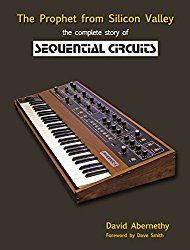
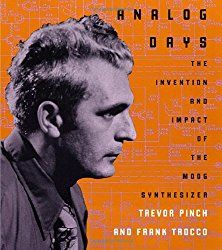
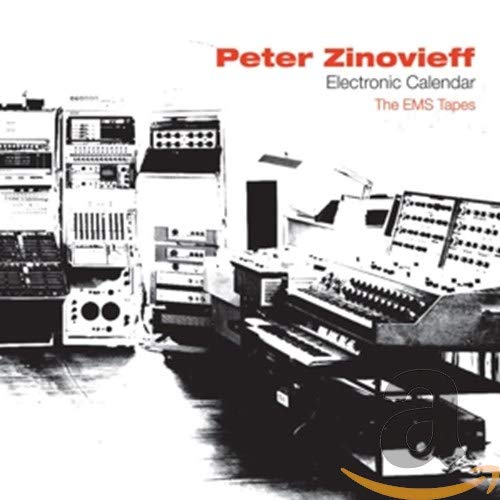
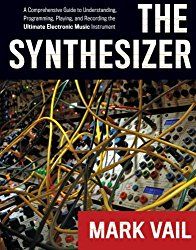
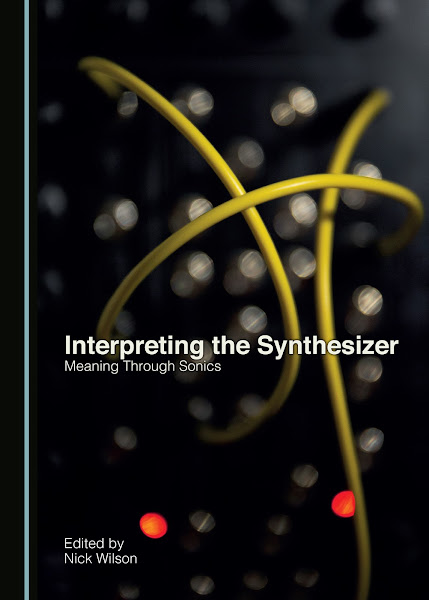
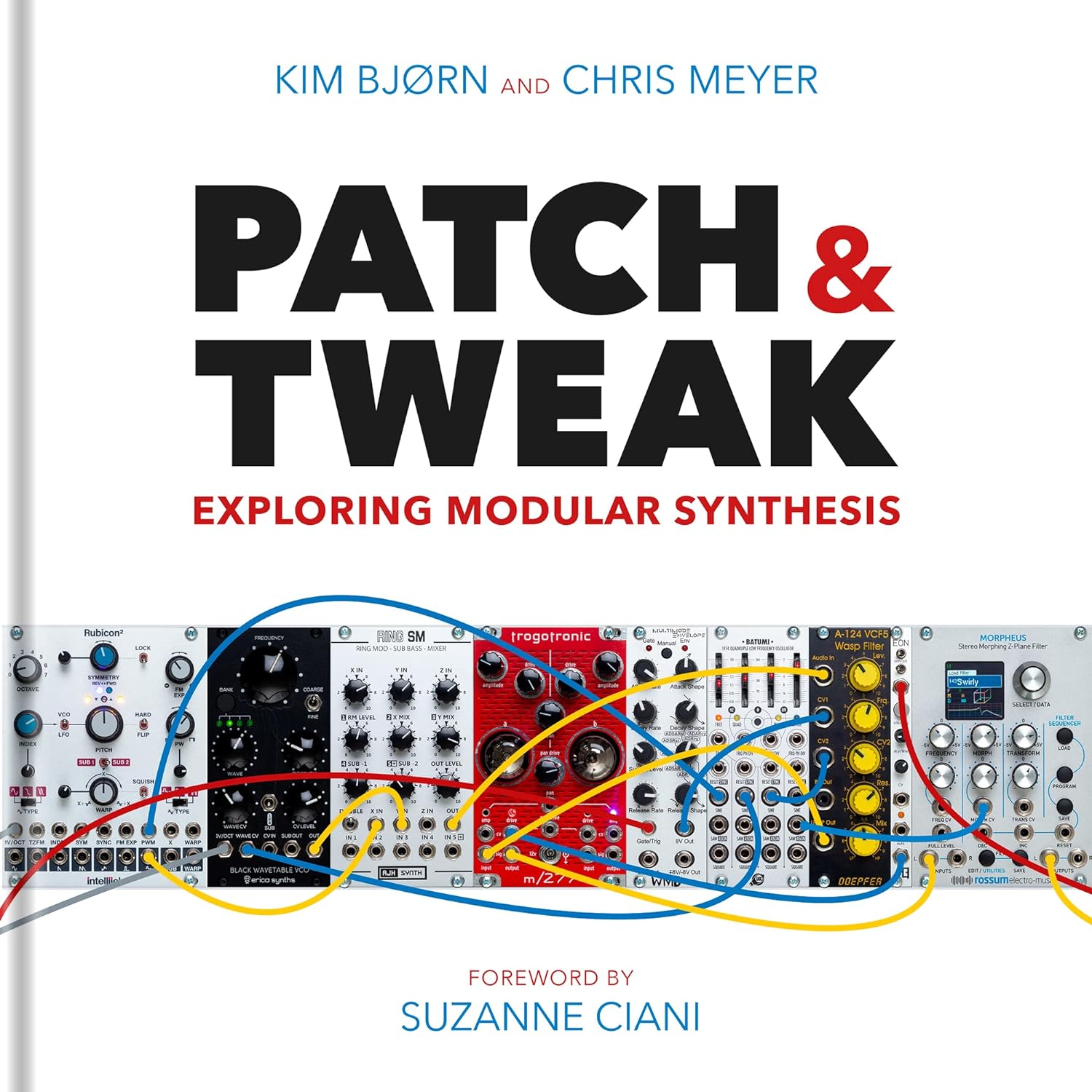
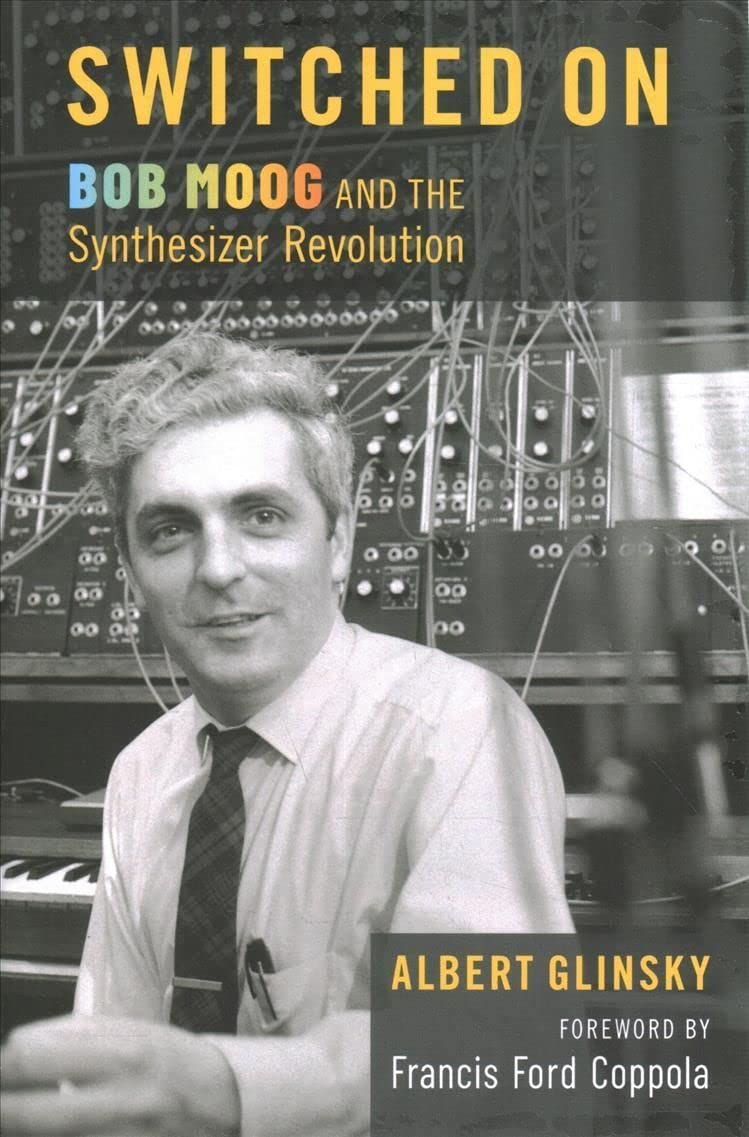
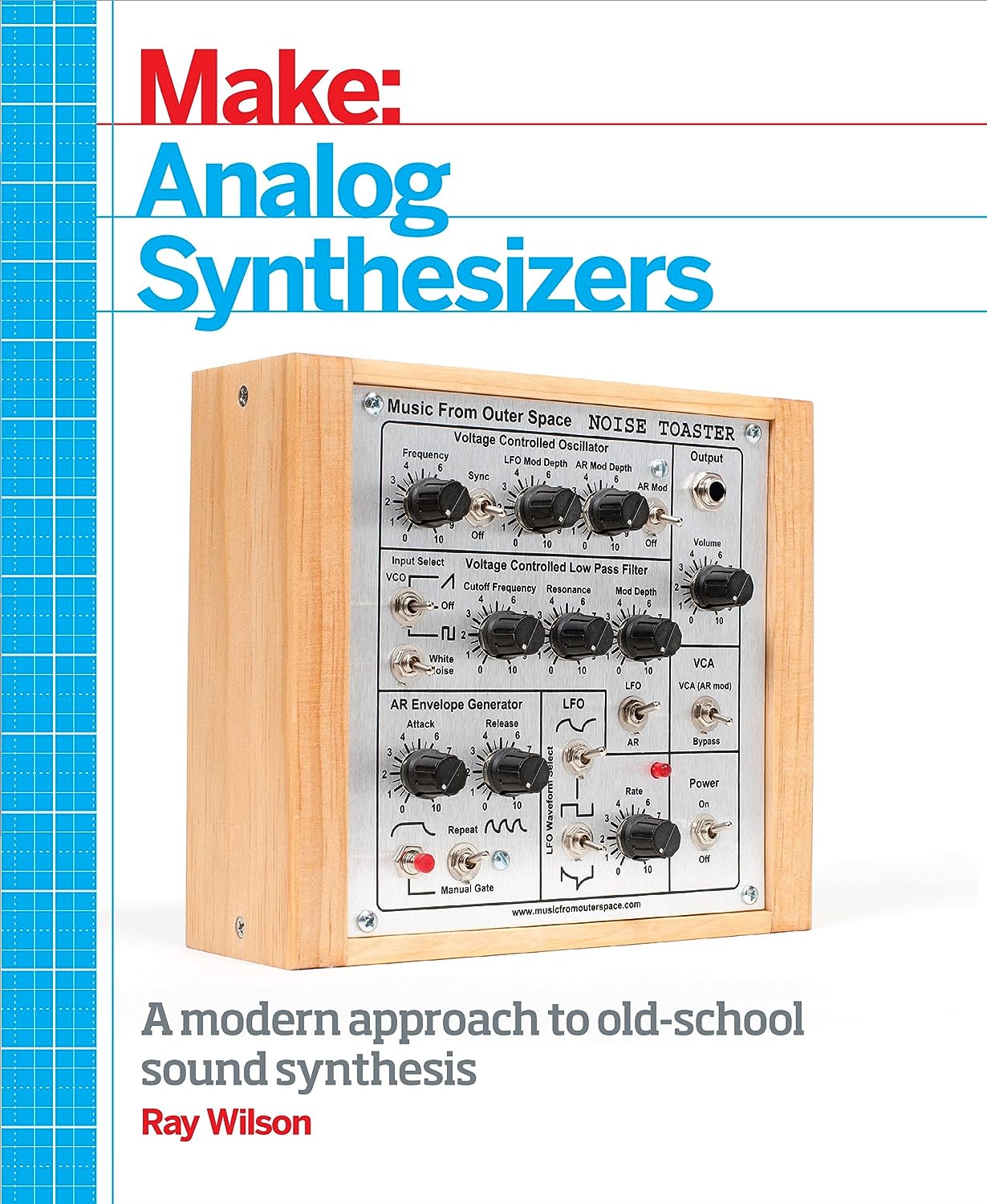
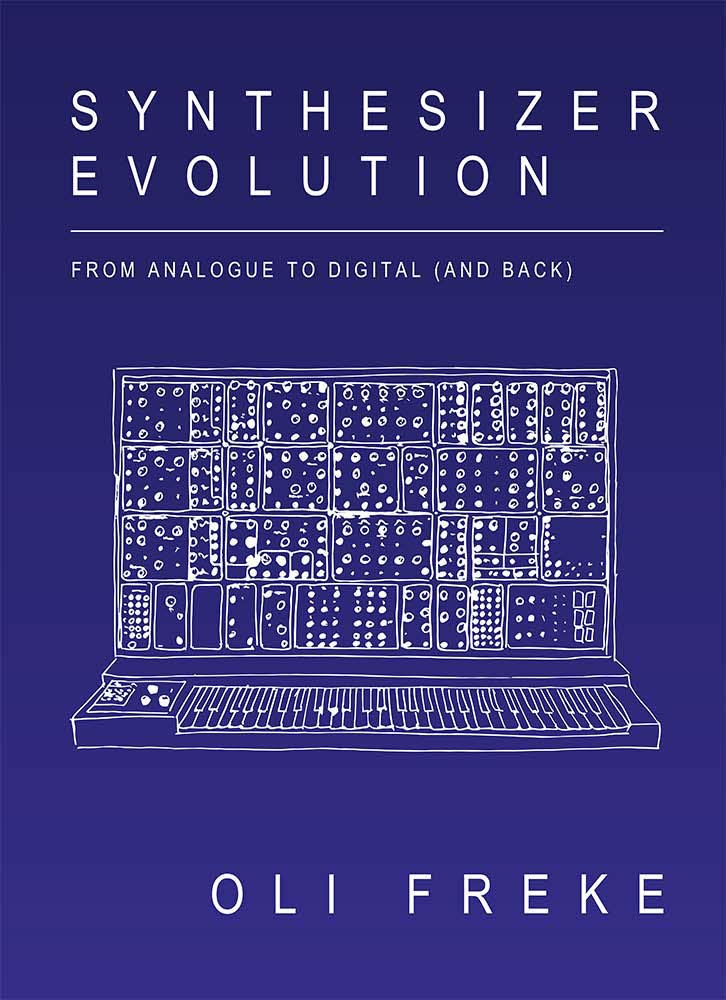
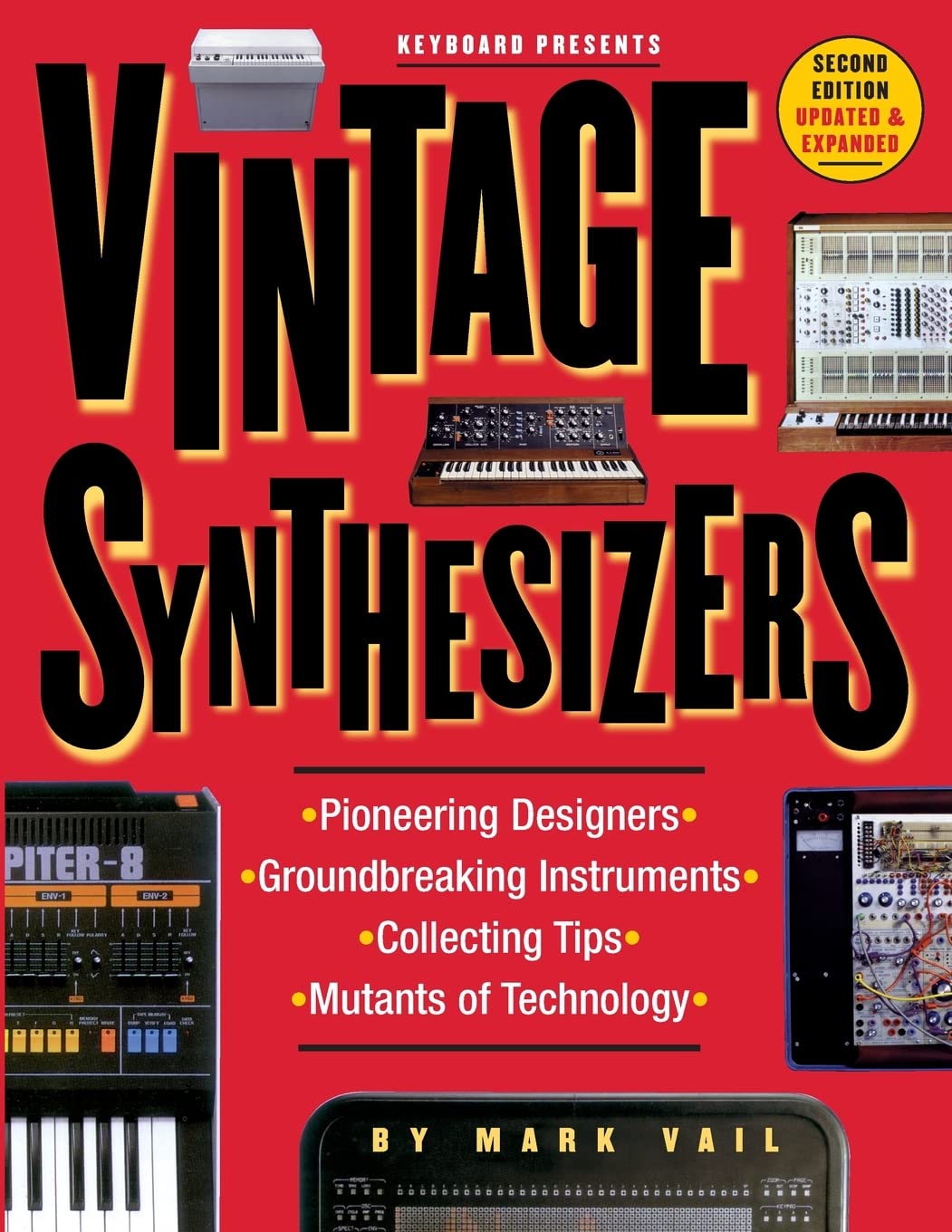
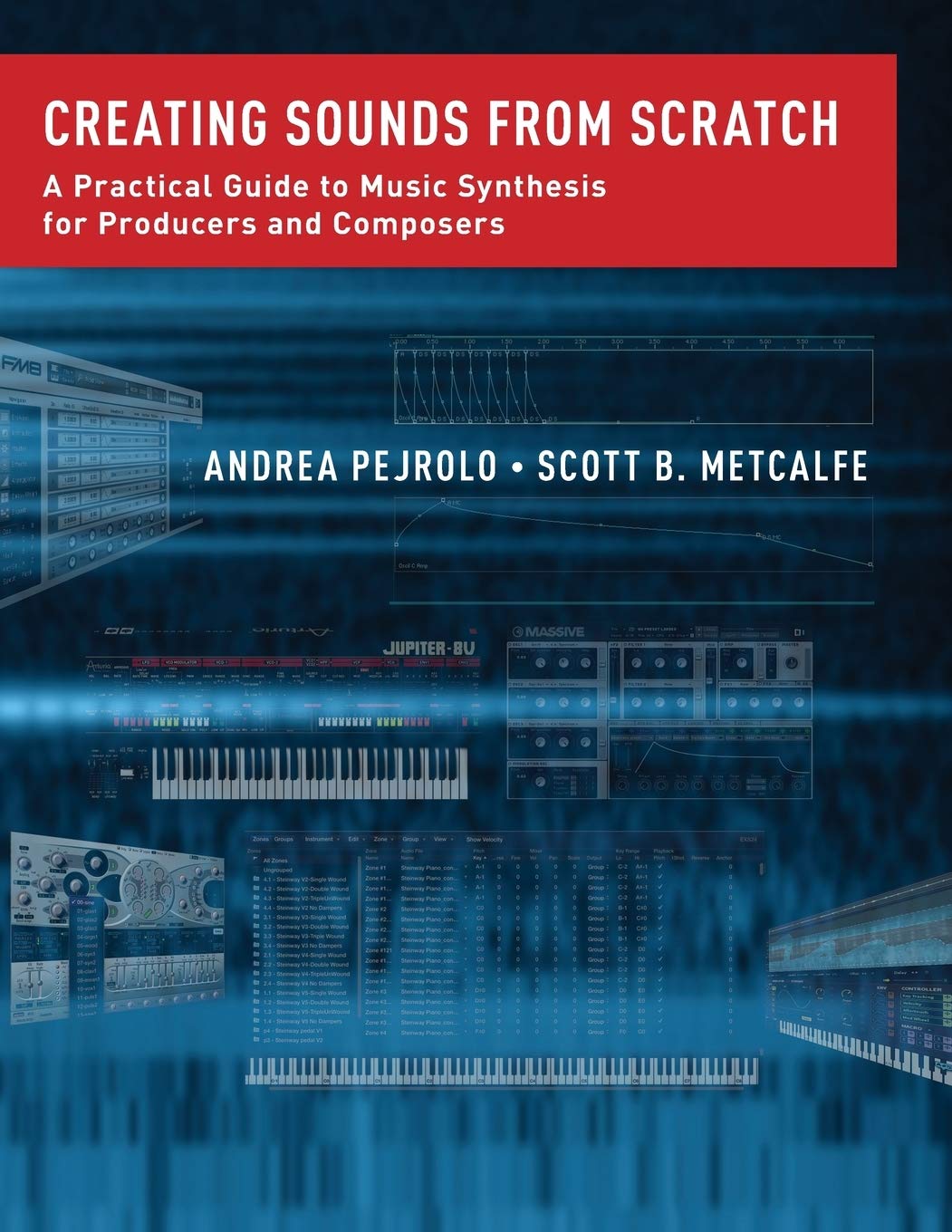
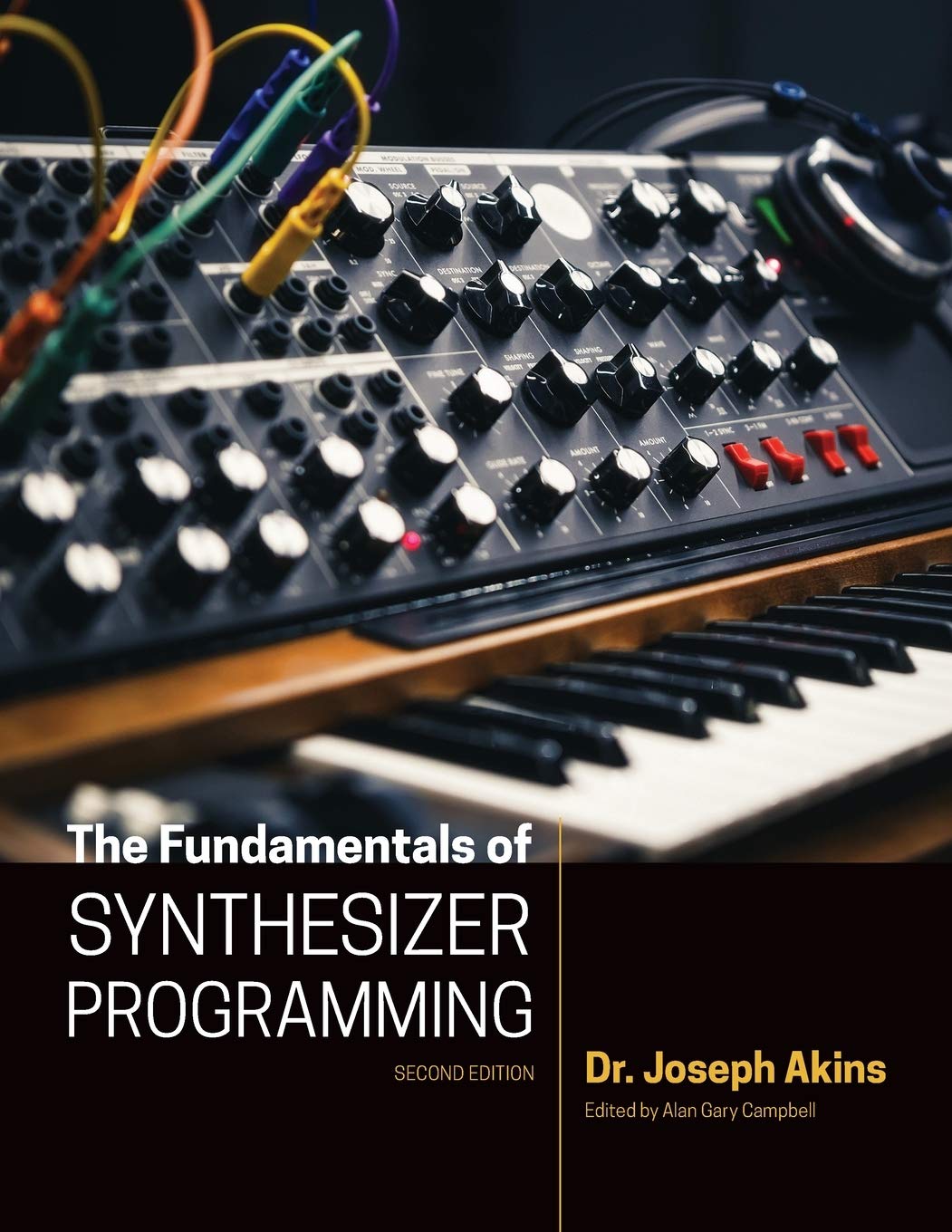

© Matrixsynth - All posts are presented here for informative, historical and educative purposes as applicable within fair use.
MATRIXSYNTH is supported by affiliate links that use cookies to track clickthroughs and sales. See the privacy policy for details.
MATRIXSYNTH - EVERYTHING SYNTH













© Matrixsynth - All posts are presented here for informative, historical and educative purposes as applicable within fair use.
MATRIXSYNTH is supported by affiliate links that use cookies to track clickthroughs and sales. See the privacy policy for details.
MATRIXSYNTH - EVERYTHING SYNTH














